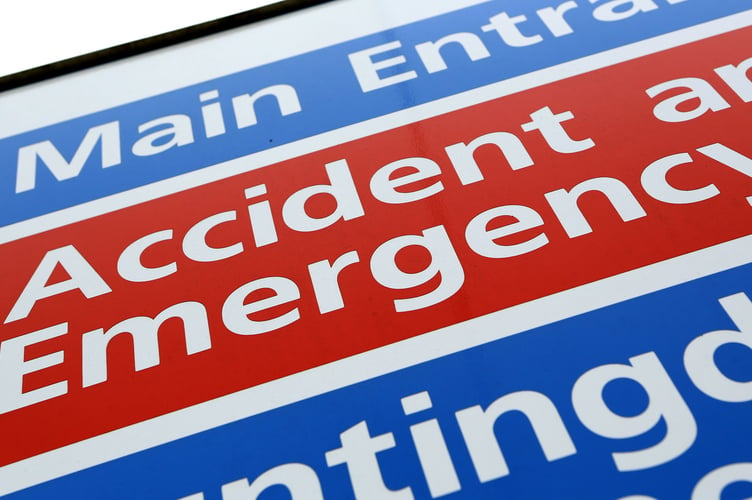Less than two-thirds of patients who arrived at accident and emergency at the Wye Valley Trust last month were seen within four hours, new figures show.
The NHS standard is for 95% of patients to be seen within four hours. However, as part of a recovery plan, the health service has extended its objective for 78% of patients to be admitted, discharged or transferred within this time frame by March 2026.
Recent NHS England figures show there were 7,364 visits to A&E at Wye Valley NHS Trust in September. Of them, 4,828 were seen within four hours – accounting for 66% of arrivals.
This means the trust fell below the recovery target and the original standard.
Some 75% of patients across England's A&Es were seen within four hours, down from 76% in August.
The number of emergency admissions waiting more than 12 hours from a decision to admit to actually being admitted – so-called "corridor care" – stood at 44,765 in September, up from 35,909 in August.
Some 129,035 patients waited at least four hours from the decision to admit to admission in September, up from 115,826 in August.
At Wye Valley NHS Trust, 717 patients waited longer than four hours, including 274 who were delayed by more than 12 hours.
Professor Nicola Ranger, general secretary and chief executive of the Royal College of Nursing, described the figures as "incredibly alarming".
She added: "Even before the cold weather hits, the number of people experiencing long, tortuous waits in A&E are skyrocketing.
"All signs are pointing to a corridor care disaster this winter and ministers must now take urgent steps to keep patients safe."
Meanwhile, a snapshot survey of more than 550 doctors by the Royal College of Physicians found just one in 10 are confident their hospital can manage safely this winter.
Dr Hilary Williams, clinical vice president of the RCP, said: "It’s concerning to see our physician members tell us that they are not confident their hospitals can safely manage the pressures of the coming winter.
"We have long-standing, systemic issues in the NHS – from rising A&E attendances to delays in discharge – that cannot be resolved overnight."
About 2.4 million people attended A&E departments across England last month – a 4% rise on September last year.
The overall number of attendances to A&E at Wye Valley NHS Trust in September was a rise of 3% on the 7,152 visits recorded during August, but in line with the number seen in September 2024.
Professor Meghana Pandit, NHS national medical director, said: "NHS staff made history this summer, delivering record-breaking levels of care for this time of year.
"But we're not slowing down.
"With A&E and ambulance demand already higher than last year, staff are gearing up for a tough looking winter.
"As ever, the public can play their part by getting your flu, Covid, and respiratory syncytial virus jabs if eligible, using NHS 111 for non-urgent help, and calling 999 or visiting A&E for life-threatening emergencies."




